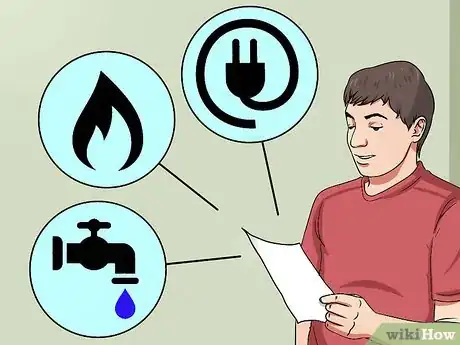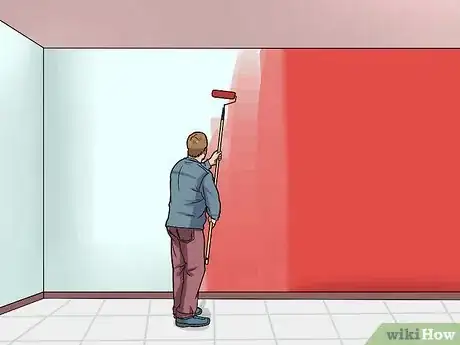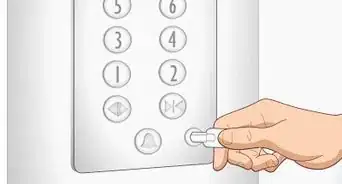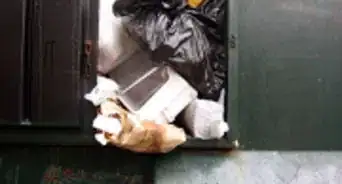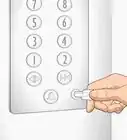This article was co-authored by Marty Stevens-Heebner, SMM-C, CPO®. Marty Stevens-Heebner was the first Certified Senior Move Manager (SMM-C) in the United States and is Founder and CEO of Clear Home Solutions, a move management and professional organizing company based in southern California. Marty is also a Certified Professional Organizer and a Certified Aging in Place Specialist (CAPS) through the National Association of Home Builders. She is the President-Elect and is on the board of directors of the National Association for Senior Move Managers, a member of the National Association of Professional Organizers, and has been acknowledged as a Hoarding Specialist and ADHD Specialist through the Institute for Challenging Disorganization.
wikiHow marks an article as reader-approved once it receives enough positive feedback. In this case, 100% of readers who voted found the article helpful, earning it our reader-approved status.
This article has been viewed 228,335 times.
Moving into your first apartment is an exciting experience! There's a lot to consider, though: setting up the apartment, unpacking, decorating, and getting to know your neighborhood. It can take some time to settle into your new space, but the quicker you are able to establish yourself, the quicker you will feel at home.[1]
Steps
Setting Up Your Apartment
-
1Check out your empty apartment space. Before moving in your belongings, inspect the apartment. You don't want to be held responsible for damages or taken by surprise if something doesn't work the day you move.[2]
- Check every part of the apartment including light fixtures, plumbing, and electrical outlets to ensure that everything is in working order.[3]
- Make sure to test all of the security features, including locks, bolts, or alarm systems.
- You may want to research local crime to know about potential security issues.[4]
- Make sure to check window locks, fire escapes, and entrance doors.[5]
- If anything isn’t working properly or the apartment isn’t up to your cleanliness standards, report it to your landlord or apartment management company and request that he fix any problem areas.[6]
-
2Set up your utilities. You want to make sure that your new apartment is ready the day you move in, so set up your utilities at least a few days in advance. This will help ensure there is no delay in your being able to move in and live in your space.[7]
- Get electricity, gas, and water accounts set up as necessary. Some landlords will include all of these in rent price, while others will include some utilities and not others.
- Your landlord should provide you with information the best companies to contact as well as the average typical monthly costs for electricity and gas.
- Set up your internet. and cable TV if you want them. It’s a good idea to contact several different providers to find one that will meet your needs and your budget.[8]
Advertisement -
3Clean the apartment before unpacking your belongings. Your landlord should make sure the space is properly cleaned and painted before you move in, but take the opportunity to deep clean it while it is empty. This will help you get to know the space better and may also help you identify problems inside the space.
- Vacuum, dust, clean mirrors and windows, and disinfect the bathroom and kitchen.
- Make sure to note if you find any problems or any cosmetic items that you’d like to fix.
-
4Unpack your belongings in their designated rooms. Once your belongings are delivered, you can unpack them and arrange your apartment. Unpack and arrange one room at a time from the rooms you will use the most to those you will use the least.
- Consider starting with the bathroom, the kitchen, and bedroom(s). The most important spaces for you to finish first are the bathroom and your bedroom since you will be using both rooms as soon as you move. If you plan on cooking in your first week, then you’ll need to unpack and arrange the kitchen as well.
- Pack priority boxes so that you can access anything you will need immediately without any hindrances.[9]
- It can take a while to complete each room, but unpack your belongings completely so that you can see what you have and figure out what you may need.[10]
-
5Officially change your personal information. Make sure to file necessary paperwork for having mail and bills forwarded to your new address. If you are moving to a different area, you may need a new driver’s license or car registration.[11]
Decorating Your Apartment
-
1Create a list of things you need or want. As you unpack and arrange each room, make a list of items you need to complete it. Think about not only how you would like the room to look, but also how that fits within your budget.[12]
- Include kitchen utensils such as dishes, glassware, silverware, cookware, appliances such as a toaster or blender, a garbage can, and dishwashing products.[13] Ask family members if they have any of these items that they’re willing to give away to help you defray costs.
- You may also want to write down simple food items including spices, oils, vinegar, and noodles or canned goods to be sure you have these items as soon as you want to cook.
- You’ll need office and lighting supplies including paper, light bulbs, and lamps and basics such as toilet paper and light bulbs.[14]
- Make sure that you list bathroom products as well. Don’t forget basics such as toilet paper, body wash or soap, hand soap, a plunger for clogs, towels, a bath mat, and a shower curtain.
- Prioritize the list according to what you absolutely need and what you want. For example, do you need more picture frames or do you have enough until you can save some money?
- Remember to measure your available space carefully to make sure that any furniture you buy will fit into your new apartment.
-
2Set a strict budget for yourself. Moving is an inherently expensive process and you don’t want to go overboard. Be very aware of what you can afford and set a strict budget for yourself according to this.[15]
- Stick to the list you made. It's easy to buy more than you need and go over budget very quickly.
-
3Furnish your apartment within your budget. Every apartment requires basic pieces of furniture for you to live comfortably. Buying furniture at a discount or getting it for free will help you stay within the budget you set.
- Shop at sales and look in thrift or second hand stores for cheap, good quality furniture or lamps. Remember to inspect furniture carefully for rips and insects, especially when buying secondhand.
- Try to spend a little bit more on furniture if you will use it every day. Getting a good or decent quality bed or sofa will save you money in the long run because you won’t have to replace shoddy merchandise.
- Ask family members or friends if they have any furniture they’d like to give away or which you can purchase inexpensively.
- You don’t have to buy every piece of furniture you need immediately. Think about what you will use most like a bed or sofa and purchase those pieces first. Add to your furniture as you can afford.
-
4Put up decorations as you have time and money. Give yourself plenty of time to decorate your new apartment. Moving is stressful and taking the time to make your place cozy and familiar will help relax you and make you feel settled.[16]
- Create a timeline for yourself if you like. Tackling one room at a time is a good strategy and finishing two rooms per week should suffice.[17]
- One of the easiest and least expensive ways to decorate a new apartment and add some atmosphere is to paint. Make sure you're allowed to paint inside your apartment, and then use color on one wall or a couple of walls to accent your home.
- Hang familiar paintings, photographs and decorations. These will make you feel more at home and are an inexpensive way to jazz up your space.
- Carpets and rugs can enlarge or make a space feel more cozy, and can also dampen noise.
- Add small touches such as plants or candles. For example, placing a row of candles across a table or buying a few inexpensive plants and plant pots can add a lot of atmosphere to your apartment.
- Remember that everything doesn’t have to match. It often looks much cooler and homier to have furniture and decorations that complement one another but don’t match exactly.
Getting to Know the Neighborhood
-
1Get to know your landlord or security personnel. Take the time to get to know your landlord and introduce yourself to any security personnel that may work in your building. If these people know you and where you live, they can watch for security issues or other problems.[18]
-
2Introduce yourself to your neighbors. Meet your neighbors as soon as you can so that they know who you are and everyone feels as comfortable as possible. You can introduce yourself in different ways such as a letter to other tenants, a housewarming party, or going from door to door.[19]
- If you live in a large apartment building, it may be advisable to just get to know people on your floor. Introduce yourself as you meet people in the elevator, lobby, or in other common spaces.
- If you live in a smaller building or house, consider a more personal approach. You could have a simple housewarming party or introduce yourself to each neighbor by going door to door.
-
3Take a walk around your neighborhood. Going for a leisurely walk around your neighborhood will help you become better acquainted with everything the area offers. Knowing what’s available can help you feel more settled in your new space.[20]
- Check out parks, public gardens, and playgrounds. These kinds of spaces will give you and your family members a place to relax and unwind.[21]
- Look for nearby restaurants and shops to get a feeling for what is close by, especially when you’re in a pinch. It might be worth it to build up a relationship with the businesses in your area.
- This may also give you the chance to meet your neighbors.
-
4Locate nearby schools and other community centers. You’ll want to be aware of schools, grocery stores, and community buildings. Locating these places may be important to helping you and your family get settled.
- Make sure to register your children for school if you haven’t done so already.[22]
- Libraries, churches, fitness clubs, and community centers may offer activities that can help you meet people and get to know your new neighborhood better.
-
5Go grocery shopping. Once you’re unpacked and know the neighborhood a bit, you may want to cook for yourself. Plan out some meals and stock your kitchen by shopping at a local grocery or specialty food store. You may meet some new neighbors or discover other hidden gems while grocery shopping.
- Sign up for a shopping card to take advantage of any savings the store may offer.
Community Q&A
-
QuestionI am a first time renter, how do I get gas and electricity turned on in my name?
 Terry Flowering BranchCommunity AnswerCall each utility company you need service from well in advance of your move in date, and ask that the service be put in your name. The utility will do a small interview over the phone and a credit check may be necessary. In some cities there are service centers or providers who can arrange all the transfers for you. You might want to ask the leasing office/landlord about this.
Terry Flowering BranchCommunity AnswerCall each utility company you need service from well in advance of your move in date, and ask that the service be put in your name. The utility will do a small interview over the phone and a credit check may be necessary. In some cities there are service centers or providers who can arrange all the transfers for you. You might want to ask the leasing office/landlord about this.
References
- ↑ http://www.apartmentguide.com/blog/tips-for-settling-in-a-post-move-checklist/
- ↑ http://www.apartmentguide.com/blog/tips-for-settling-in-a-post-move-checklist/
- ↑ http://www.apartmentguide.com/blog/tips-for-settling-in-a-post-move-checklist/
- ↑ http://www.safewise.com/resources/apartment-security
- ↑ http://www.safewise.com/resources/apartment-security
- ↑ http://www.apartmentguide.com/blog/tips-for-settling-in-a-post-move-checklist/
- ↑ http://www.apartmentguide.com/blog/tips-for-settling-in-a-post-move-checklist/
- ↑ http://www.digitaltrends.com/home-theater/negotiate-better-deal-broadband-tv-service/
- ↑ Marty Stevens-Heebner, SMM-C, CPO®. Certified Professional Organizer & Senior Move Manager. Expert Interview. 14 January 2020.
- ↑ http://www.apartmentguide.com/blog/tips-for-settling-in-a-post-move-checklist/
- ↑ http://www.apartmentguide.com/blog/tips-for-settling-in-a-post-move-checklist/
- ↑ http://www.forrent.com/tips/moving-in/5-tips-getting-settled-new-space
- ↑ http://www.apartmentguide.com/blog/tips-for-settling-in-a-post-move-checklist/
- ↑ http://www.apartmentguide.com/blog/tips-for-settling-in-a-post-move-checklist/
- ↑ http://www.apartmentguide.com/blog/tips-for-settling-in-a-post-move-checklist/
- ↑ http://www.forrent.com/tips/moving-in/5-tips-getting-settled-new-space
- ↑ http://www.forrent.com/tips/moving-in/5-tips-getting-settled-new-space
- ↑ http://www.safewise.com/resources/apartment-security
- ↑ http://www.apartmentguide.com/blog/tips-for-settling-in-a-post-move-checklist/
- ↑ http://www.apartmentguide.com/blog/tips-for-settling-in-a-post-move-checklist/
- ↑ http://www.apartmentguide.com/blog/tips-for-settling-in-a-post-move-checklist/
- ↑ http://www.apartmentguide.com/blog/tips-for-settling-in-a-post-move-checklist/
About This Article
To settle into your first apartment, start by unpacking your things one room at a time, starting with the rooms you use most, like the bathroom, kitchen, and bedroom. As you set up each room, make a list of things you need, such as bathroom products, kitchen appliances, and lighting supplies. After you set up your apartment, take some time to explore the neighborhood and introduce yourself to the neighbors. For more tips, including how to decorate your new place, keep reading!

